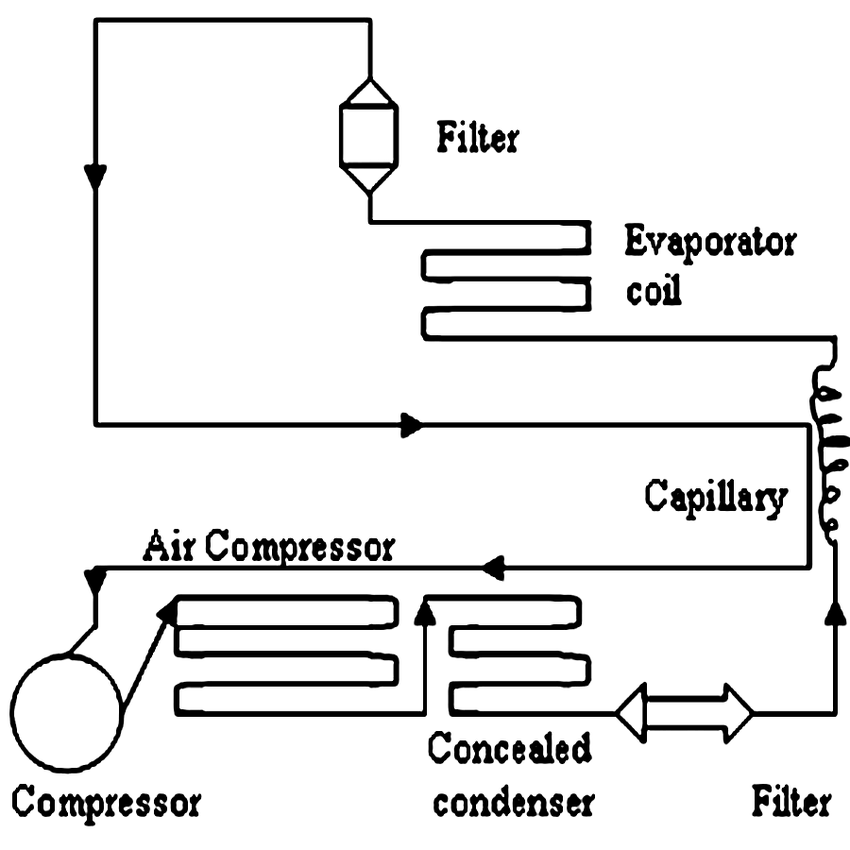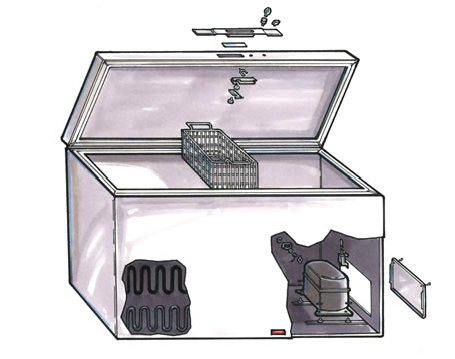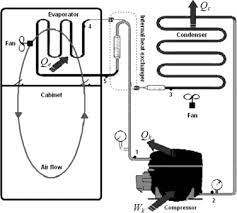For families, frozen food stores, and supermarkets alike, the use of freezers is essential for efficient and reliable food storage. But have you ever wondered about the inner workings of these crucial appliances? Understanding the structure and operating principles of a freezer can provide valuable insights into how they keep your food fresh and safe. This article delves into the various components that make up a chest freezer, exploring how each part functions together to ensure optimal performance. By gaining a clearer understanding of these mechanisms, you'll be better equipped to make informed choices about freezer maintenance, usage, and selection. Read on to uncover the intricacies of chest freezers and how they work to meet your storage needs.
Operating principles of a chest freezer

Before digging into the structure and operating principles of the freezer, we can refer to the operating principles of the device. The freezer has an insulated chamber and a heat pump system to provide food cooling temperatures below -18 degrees Celsius. In this low condition, bacteria cannot function, helping to keep food quality for a long time.
The freezer operates on the principle of compressing refrigerant gas from gas to liquid and releasing heat. The air compressor performs the process of compressing the refrigerant under high pressure to change the gas to a liquid state.
Through the condenser, heat is released into the environment. In conditions of reduced pressure, the liquid gas will turn into gas and absorb heat at the evaporator to create a circulation.
Structure of the chest freezer

What is the structure and operating principle of the freezer? Above, we have learned about the operating principle of the freezer. Next, you will understand more about the structure of the freezer to have more knowledge when using it.
Condenser and evaporator
The condenser and evaporator are indispensable and extremely important parts in the freezer.
The condenser is the part that helps to release heat from the gas when it liquefies, the refrigerant gas after liquefaction will go from the compressor to the condenser.
The evaporator has the function of evaporating the refrigerant gas, cooling the space inside the refrigerator.
Compressor

The compressor has the function of compressing refrigerant gas under high pressure to change it into a liquid state. The process generates heat and releases it into the environment through the condenser. The compressor sucks the refrigerant in the copper evaporator, compresses the refrigerant from gas to liquid, generates heat and pushes it into the condenser.
Insulation system, insulation, door
The insulation system and the door are two parts that help keep heat in the cabinet, limiting loss to the outside.
- The insulation system minimizes heat exchange inside and outside the freezer. Usually the insulation layer is made of glass wool and polyurethane.
- The door has an insulation gasket system that limits heat exchange around the cabinet door.
Refrigerant gas

Refrigerant gas is a circulating medium used in the refrigeration system to circulate temperature at different locations. Refrigerant gas can absorb heat when evaporating at low pressure and at high pressure can release heat when liquefying.
In addition, each type of refrigerant gas has different points in terms of evaporation temperature and condensation pressure. Therefore, it will affect the working efficiency of the engine and the cooling efficiency of the freezer.
Other add on benefits
- The temperature control panel helps users adjust the freezer temperature easily, according to their needs.
- The safety lock protects the freezer to ensure against loss of food and frozen goods, keeping children safe.
- The drain hole makes cleaning the freezer easy and quick, helping to increase the life of the refrigerator.
- Moving wheels support the process of changing the freezer's location easily and conveniently.
- A separate storage basket in the freezer helps to store different types of food separately.
- Freezers used to display goods include glass-front freezers using curved glass doors, sliding glass doors, etc.
Purpose of chest freezer
A chest freezer is a spacious, rectangular appliance specifically designed for storing frozen food items. Unlike upright freezers, it opens from the top, offering generous storage capacity for bulk items. These freezers are commonly utilized to preserve food for extended periods, store large quantities of purchases and seasonal produce, and keep specialty items frozen.
Conclusion
In conclusion, understanding the components and structure of chest freezers is crucial for making informed decisions about their purchase, maintenance, and use. These spacious, top-opening appliances feature key components like the compressor, evaporator coils, and thermostat, all working together to ensure efficient freezing. The design maximizes storage space and energy efficiency by minimizing cold air loss.
For households, frozen food stores, and supermarkets, chest freezers offer reliable storage solutions for bulk purchases, seasonal produce, and specialty items. Regular maintenance, including defrosting, cleaning, and checking components, is essential for optimal performance. Being aware of potential issues, such as unusual noises or temperature fluctuations, can help address problems early and extend the lifespan of the appliance.
Chest freezers provide a dependable and efficient way to preserve food for extended periods, reducing waste and saving money. As technology advances, we expect further innovations that enhance freezer design and functionality, offering even greater benefits.
Thank you for exploring the components and structure of chest freezers with us. We hope this information has been valuable in deepening your understanding of these essential appliances. Whether you're considering purchasing a new chest freezer or optimizing the use of your current one, the insights provided in this article will guide you towards efficient and effective food storage.
 Vietnamese
Vietnamese  English
English  Chinese
Chinese  French
French  Spanish
Spanish  Russian
Russian  Arabic
Arabic  Portuguese
Portuguese